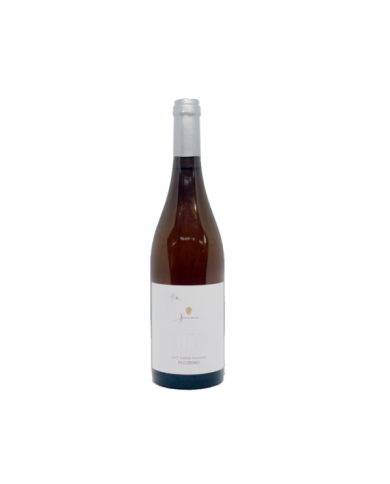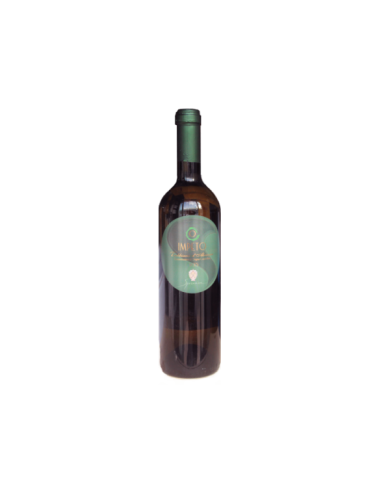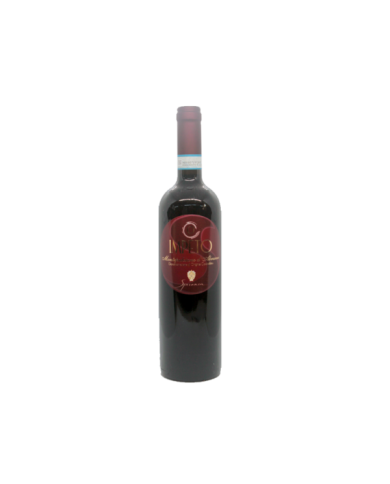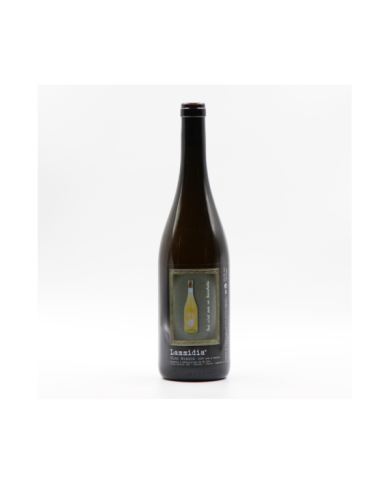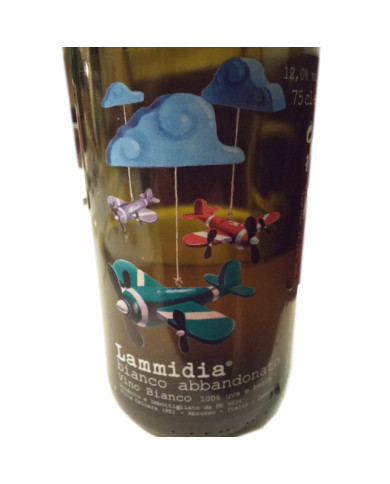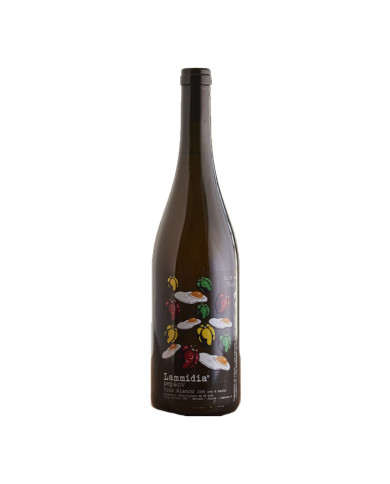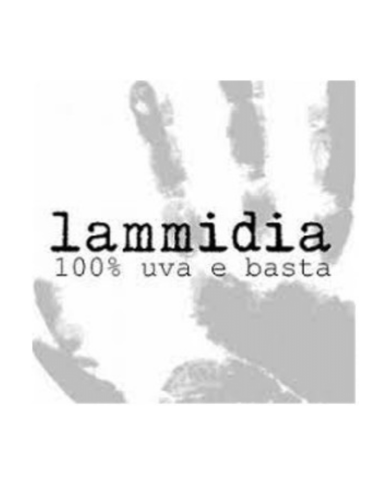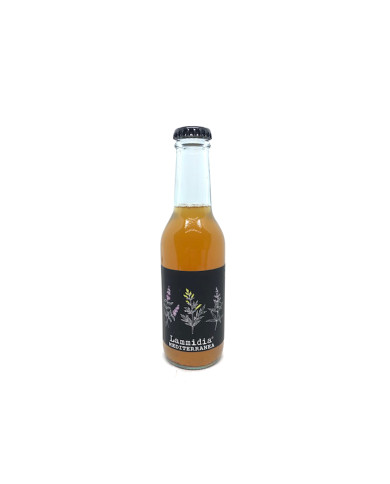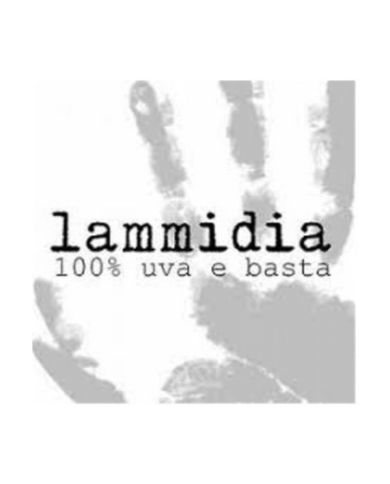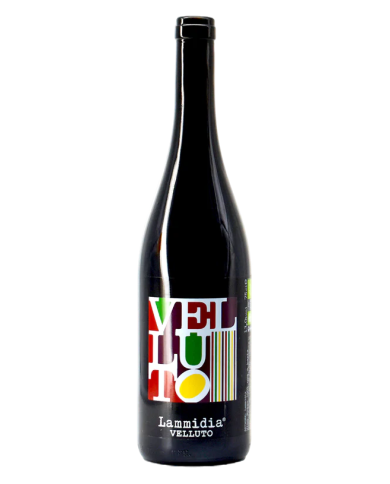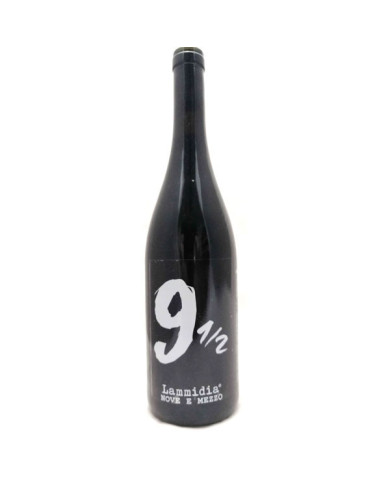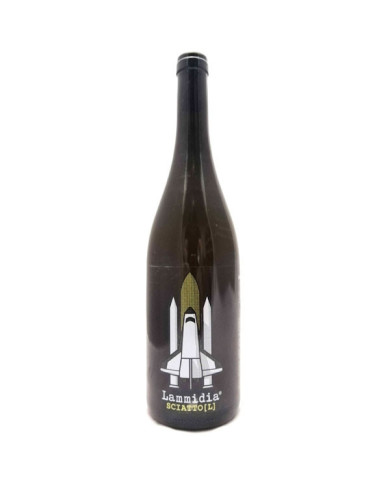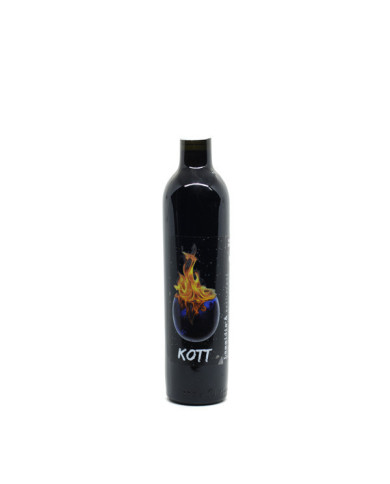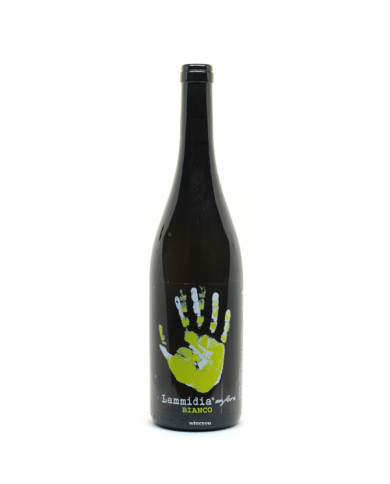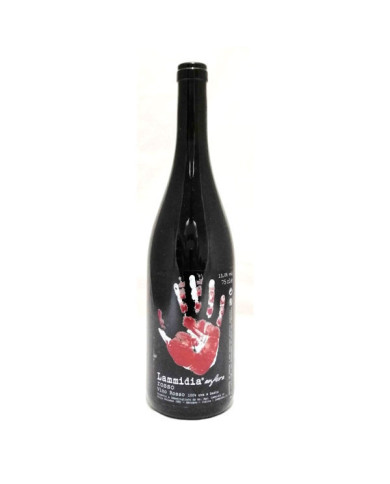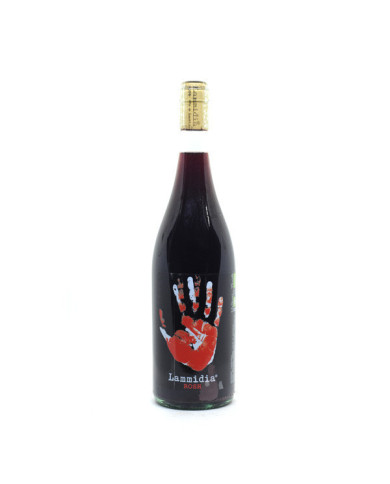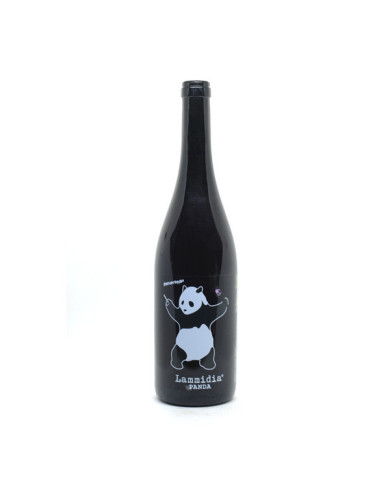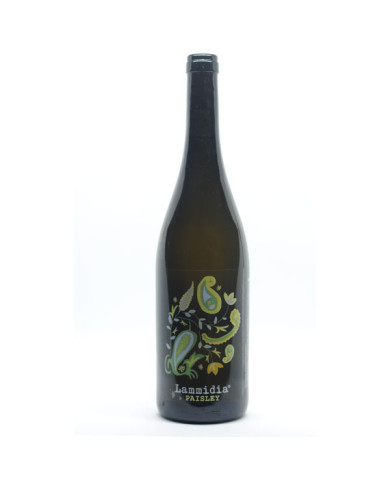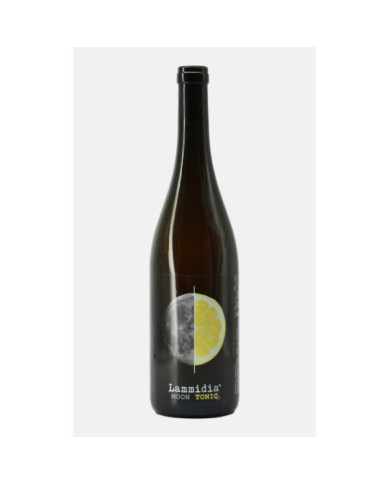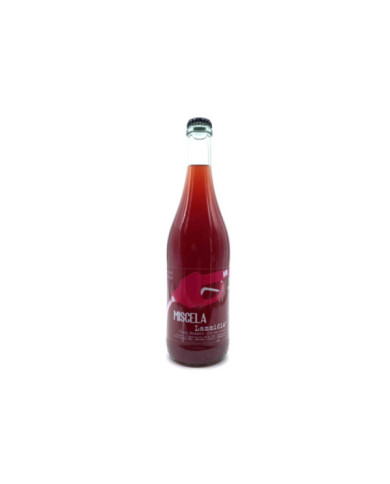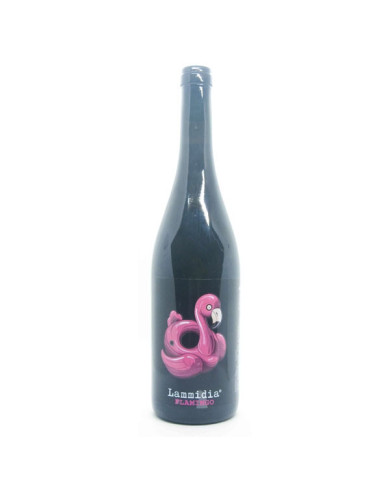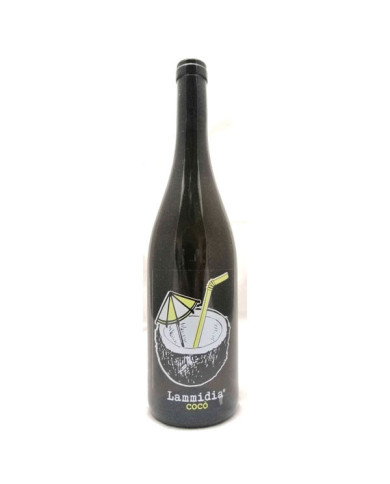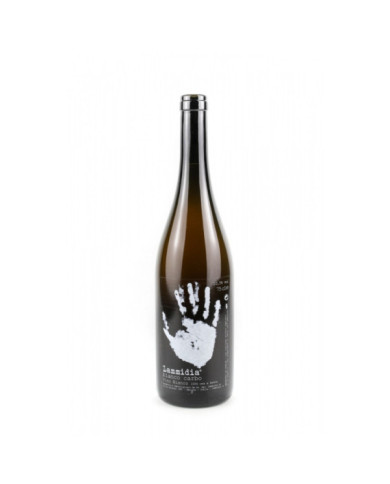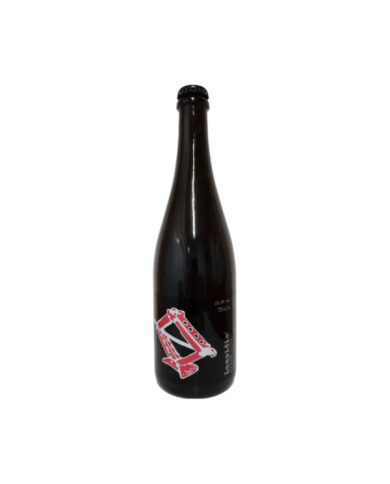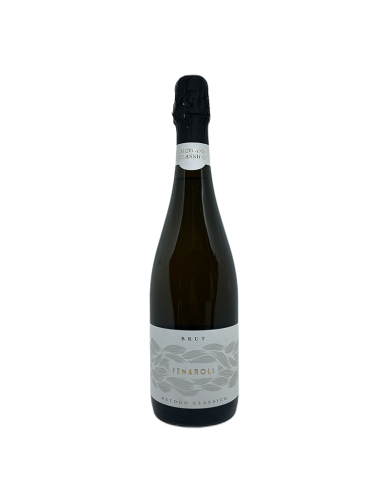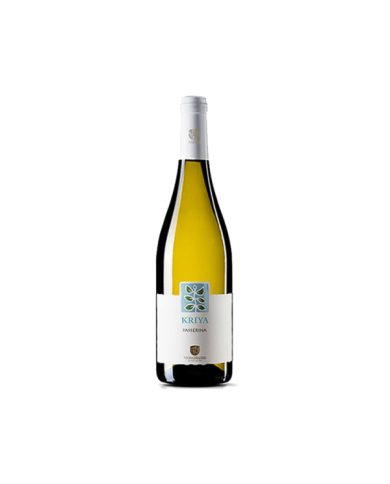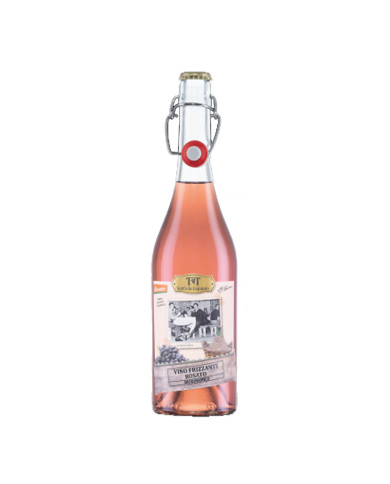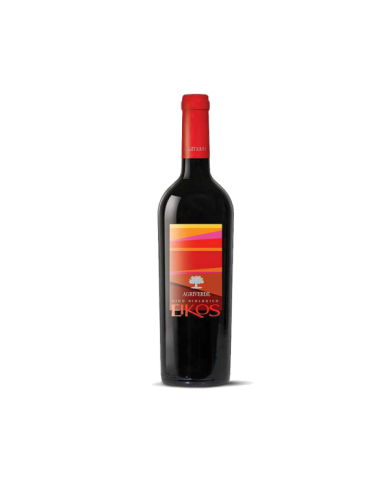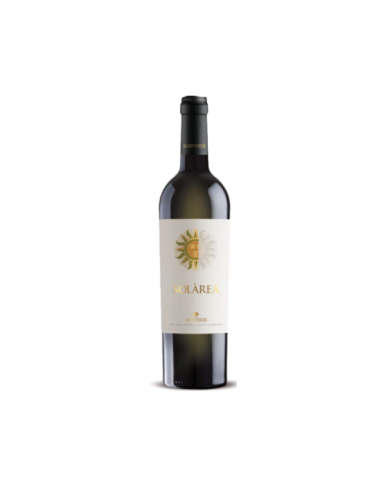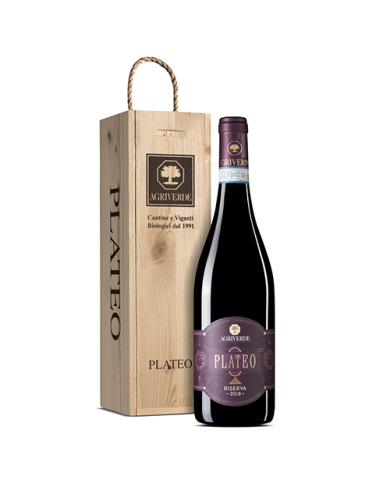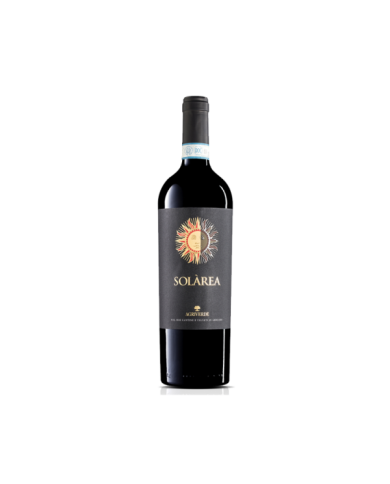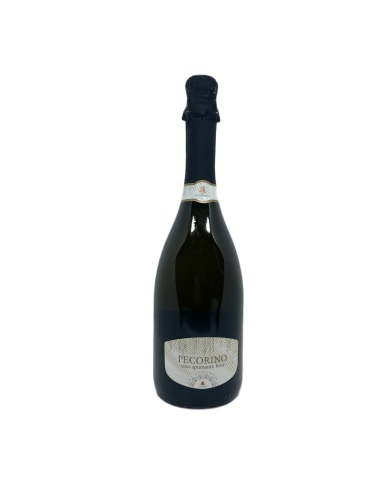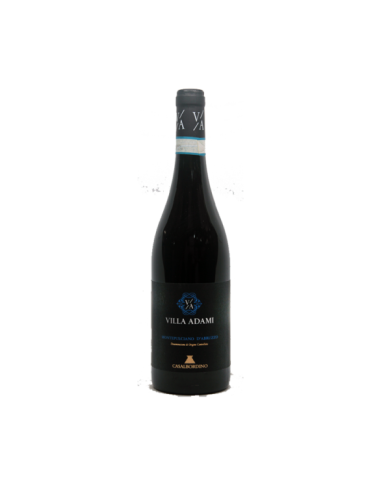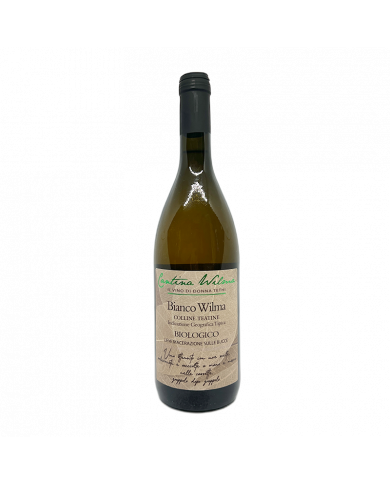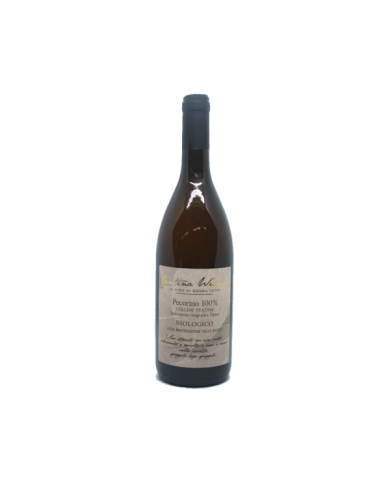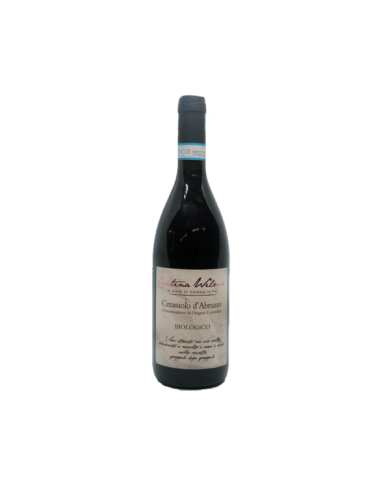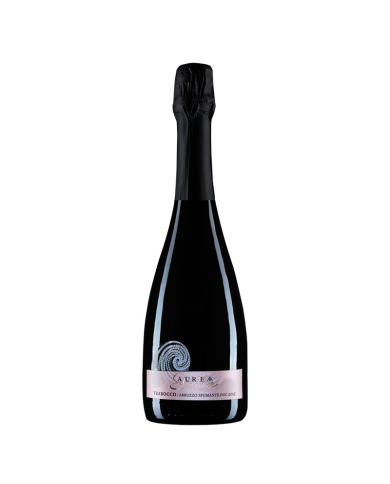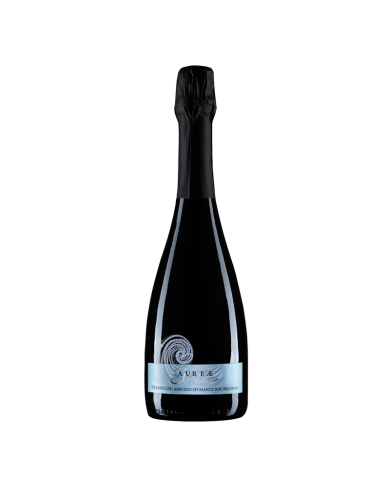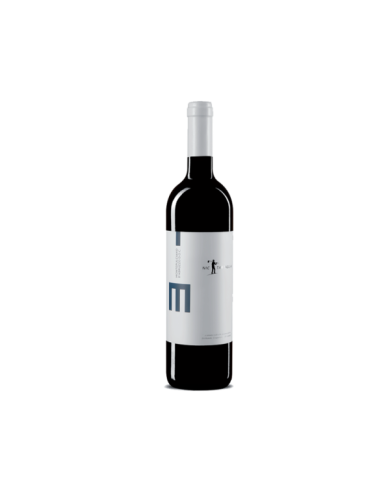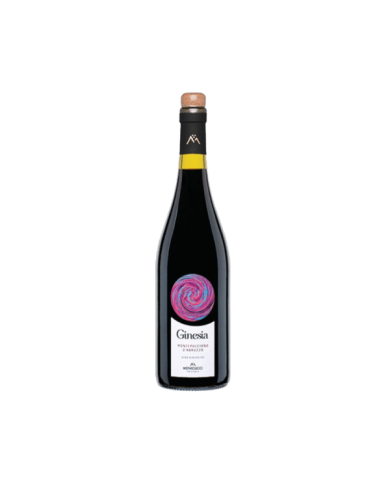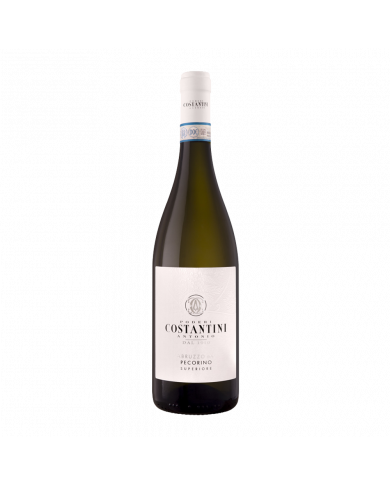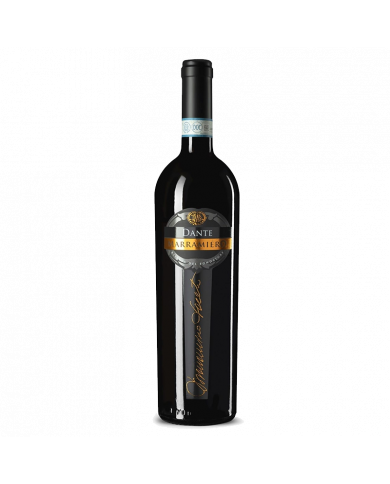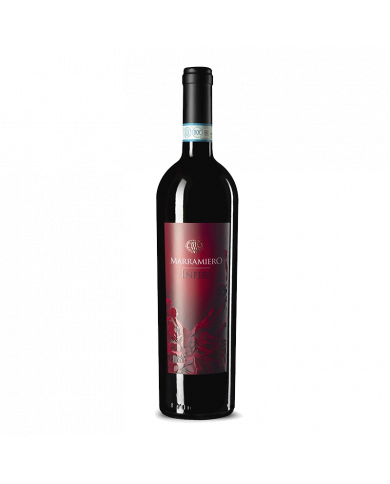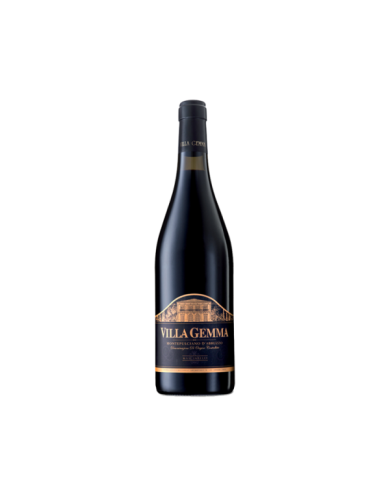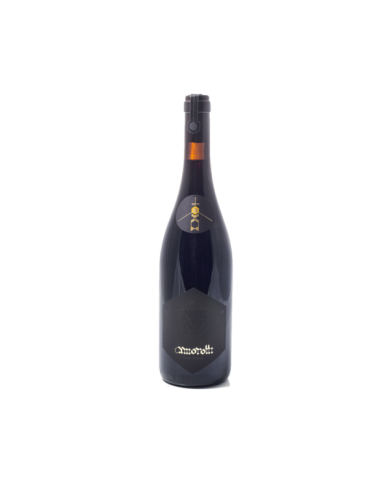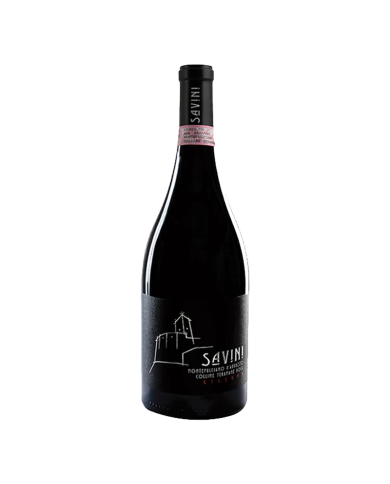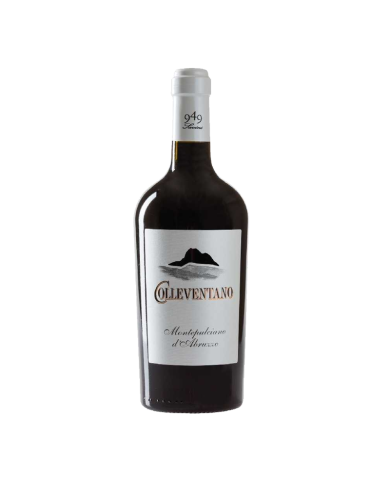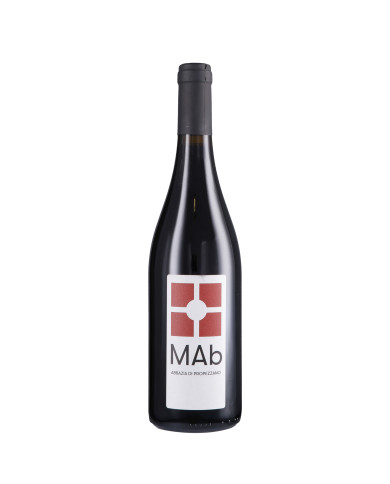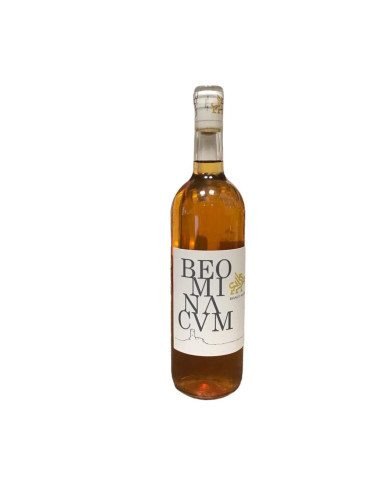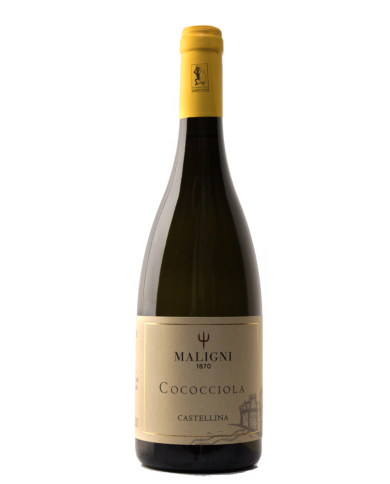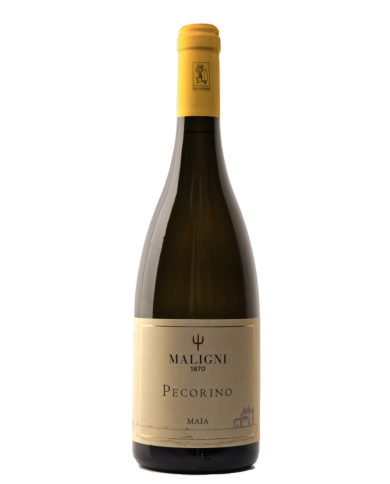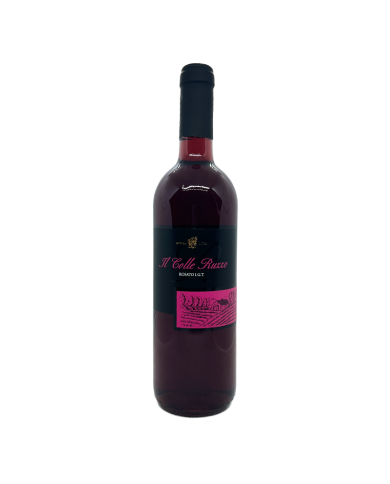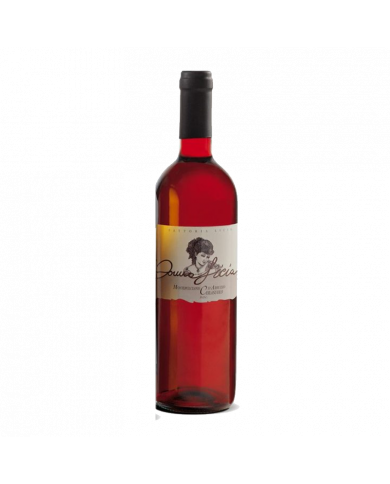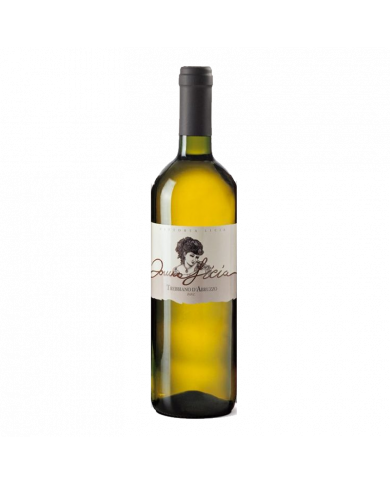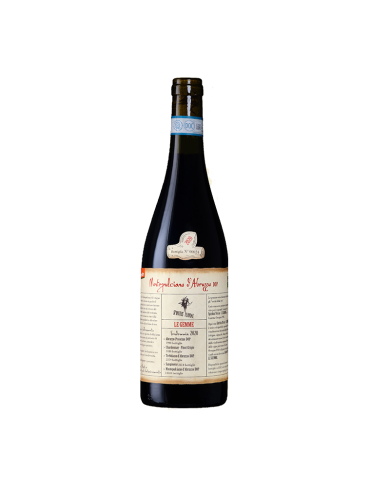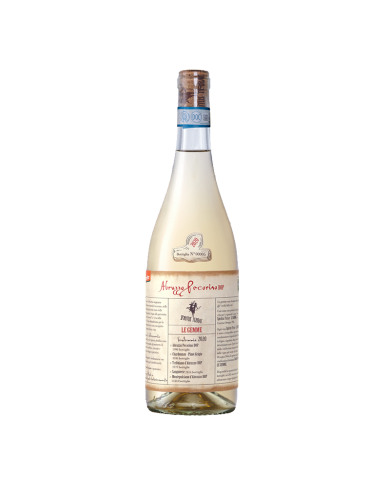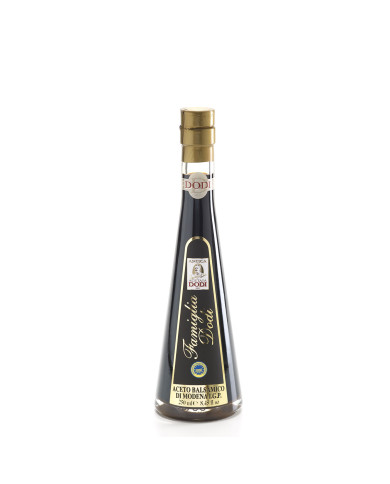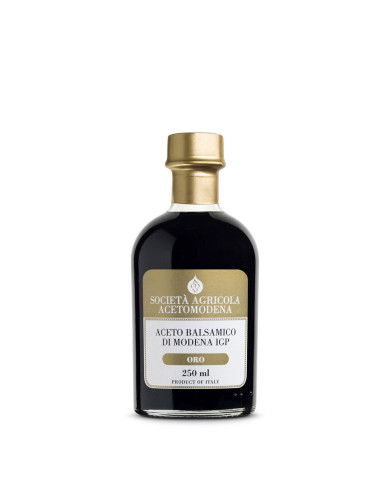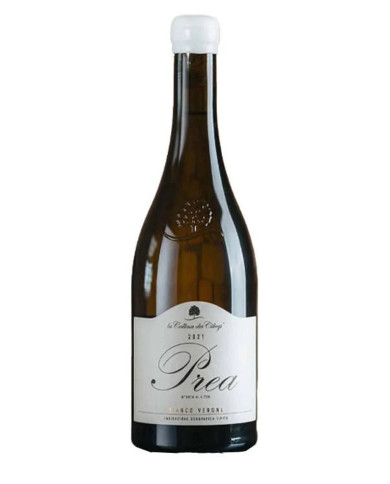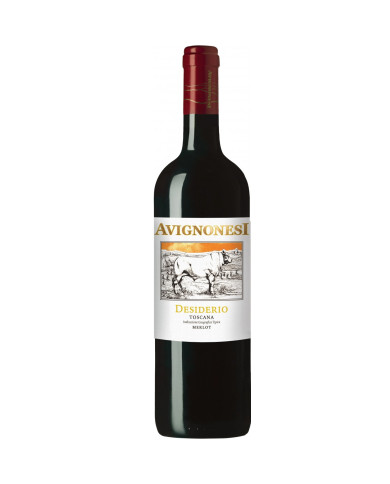Abruzzo pecorino rich in aromatic notes of honey, resin and dehydrated lemon. A dense structure with a final charged with positive energies. Ideal with fish recipes.
Abruzzo pecorino rich in aromatic notes of honey, resin and dehydrated lemon. A dense structure with a final charged with positive energies. Ideal with fish recipes.
The "Trebbiano d'Abruzzo Impeto" , are characterized by the right sugar and alcohol content and by a good fixed acidity, which helps to enhance the aromas and maintain them over time. The Speranza winery produces about 5000 bottles of the "Trebbiano d'Abruzzo Impeto" wine, testifying to the importance that this wine has in the context of the company's production.
The wines of the Speranza company and in particular the "Montepulciano d'Abruzzo" , are characterized by the right sugar and alcohol content and by a good fixed acidity, which helps to enhance the aromas and maintain them over time. The Speranza winery produces about 2700 bottles of the "Montepulciano d'Abruzzo" wine, testifying to the importance that this wine has in the context of the company's production.
Another lucky twinning with Cantina Indigeno. This time the result is DDUBBOTT in LIMITED EDITION (clear inspiration from the accordion in the Abruzzo version characterized by only two basses - DDU' BOTTE - precisely), blend of 50% Passerina di Lammidia and 50% Montonico di Cantina Indigeno, macerated with the stalks to 14 days.
Wine infused with Clary Sage, Artemisia Absinthium and Verbena Odorosa, with the addition of apple juice.
Vinification: Destemmed by hand. Contact with the skins with daily milling for two weeks Aging: Barrique Description: Pepper, black pepper, an enveloping texture in the mouth which recalls velvet
An unconventional red wine as per the Lammidia style, in which freshness and ease of drinking are sought. Obtained from pure red grapes with carbonic maceration for a week and refinement in steel. A wine that has beautiful aromas on the nose reminiscent of red fruit, followed by liquorice and spicy notes. The south of France made in Pescara.
a juice of wild strawberries and currants that ends with a strong acidity! To drink as much as I can!!!
Rosso Anfora di Lammidia is a fresh and compulsively drinkable wine obtained from red grapes. Produced by manually destemming the grapes and pressing them softly with your feet. Fermented spontaneously in amphora in contact with the skins immersed in the must for 10 days. Subsequently the wine refines together with the fine lees for a further 10 months.
Pino Nero is a red wine obtained from red grapes, fermented with semi-carbonic maceration. Spontaneous fermentation. Aging in fiberglass tanks. Without sulphites added before bottling. The result is a wine that gives the palate a great sensation of freshness and many fruit flavors.
Panda di Lammidia is a rosé wine obtained from a blend of red and white grapes. The vinification takes place spontaneously in cement, while the refinement takes place in anofra. Panda is a fresh, fruity wine, with excellent minerality and drinkability.
100% Montonico, whole bunch carbonic maceration fermentation for a week in cement tanks, then pressed and refined in the same. A territorial grape juice with infinite drinkability! From one of the oldest grapes of Abruzzo here is a wine with super floral aromas and sensations, a slightly citrusy freshness and a lot of minerality! Vibrant like all Lammidia wines!!!
Frekt by Lammidia is a fresh and surprisingly drinkable white wine made from white grapes. The vinification is spontaneous, with half of the pecorino being pressed directly, while the other half is macerated for 2 weeks in concrete with a submerged cap, and then they are assembled and aged in fiberglass containers. Frekt is a wine that stands out for its freshness, its drinkability and rusticity, and its fruity hints. A wine that will make you definitively fall in love with Lammidia.
Anubi is a wine made from red grapes. The grapes are vinified with the carbonic maceration technique, throwing the whole bunches into a large concrete vat where they remain without oxygen for 2 weeks. The result is a wine with intense fruit aromas, great freshness and drinkability.
The Metodo Classico Spumante Brut Fenaroli is a sparkling wine made from white berried grapes from the Citra winery. A Classic Method of great style and elegance
The first Dynamic Energy Vineyard (last patent by the Di Carlo family). Nature and man merge with the energy of colours... to improve biodiversity, the vitality of the soil, the positive frequencies on plants and fruits, people, animals and useful insects.
it is a rosé with intense fruity aromas, which combines balance and pleasant depth. Made exclusively in steel, it is refreshing and delicately almondy on the finish.
Intense ruby red with purple hues. The nose reveals intriguing varietal aromas of small black fruits, violets, licorice, vanilla and cocoa. In the mouth it is fresh and has an excellent structure with soft tannins and long persistence. Food pairings: cured meats, first courses of land, roast meats, game, aged cheeses.
Intense straw yellow with golden and brilliant shades. The nose is expressed with great elegance with wide varietal aromas of ripe yellow fruit, delicate floral and mineral notes, intriguing nuances of honey and vanilla. In the mouth it is a wine of great structure and complexity, it is fresh, balanced with delicate tannins and long persistence. Food matches: Complex sea and land dishes, complex sea dishes (cod, monkfish, sea bass with potatoes, etc.) and land (truffle and porcini tagliatelle, pappardelle alla hare, etc.) aged cheeses, including blue cheeses.
Ruby red with purple hues. The nose is fruity with hints of ripe red fruit: blackberry, black cherry and currant. On the palate it is fresh, dry, fruity and with soft tannins. Food pairings: cured meats, ground dishes, soups, grilled meats and aged cheeses.
Deep ruby red with violet reflections and garnet rim. The nose is expressed with great elegance with ample aromas of ripe red fruit and fine spicy notes of cocoa, vanilla, cloves, coffee and cinnamon. On the palate it is a wine of great structure, elegance and balance and of long persistence. The tannins are refined and velvety. Food matches: Appetizers based on salami and first courses based on sauces and meat, truffles and porcini mushrooms. Ideal with roasts and game, excellent with various aged cheeses and dark chocolate.
Ruby red with violet reflections. Intense and deep wine that reflects the territory in all its warmth and splendor. The delicate aging in fine oaks has contributed to its aromatic complexity: the nose expresses an intense bouquet of ripe red fruits such as black cherry in alcohol, currant, wild blackberry, and violet enriched with toasted notes of cocoa, tobacco, leather and coffee. In the mouth it is full and elegant with velvety tannins, with good acidity and long persistence. Fruit and spices come together harmoniously, leaving flavors of cherries and cocoa to be perceived in the mouth. The aftertaste is intense with balsamic and pleasantly fruity notes. Thanks to its excellent structure and fruit concentration it is a wine capable of evolving and improving for many years in the bottle. Pairings: excellent with red meats, fatty and succulent dishes, tasty and spicy dishes. Cured meats and aged cheeses and typical dishes of the Abruzzo region: sheep skewers, liver sausages, grilled lamb and mutton, ribs of beef and game meats. Serving temperature 16 degrees.
Historic vine and our workhorse. Strong and gentle in character and softness (as it is also said of the people of Abruzzo). Obtained from native grapes and selected in the harvest. Plant in rows 1/2 height exposed to solagna on calcareous-clayey soil. Appearance of cardinal red color with purplish reflections tending to blue. Excellent and well structured. Fruity and spicy bouquet, intense flavor and good body. Ideal with grilled red meats and more, salami and aged cheeses.
Obtained from native grapes and selected in the harvest. Appearance of straw yellow color with greenish reflections. On the nose it is fresh and floral with notes of white berry flowers and balsamic notes on the aftertaste. Ideal with all seafood cuisine, it also goes well with appetizers and delicate main courses.
Vine rediscovered a few years ago, widespread throughout the Abruzzo region. The name "pecorino" is given by the sheep's face shape of the bunch and by the fact that when the shepherds passed through during the transhumance, the sheep stopped to graze the leaves of this vine. Cantina Wilma obtains its wine from the "Pecorino" vine with low-row plantings on sandy calcareous soil. Appearance of yellow color, excellent fruity bouquet. The flavor is harmonious and of good quality. Ideal with all seafood cuisine, it also goes well with appetizers and delicate main courses.
Obtained from native grapes and selected in the harvest. Appearance of intense cherry color with pink reflections. On the palate it is fruity with notes of black cherry and cherry. Pairings: throughout the meal.
Brilliant pink with a fine and persistent perlage. Perfect with shellfish, raw fish and fish soups. Excellent with pizza, cold cuts, and as an aperitif
Light yellow colour, fine and persistent grain. Its ideal combination is as an aperitif and with fish-based dishes, with oysters, Parmesan, cheeses.
IO Selva delle Mura, from 100% montepulciano grapes is a still and dry natural wine. The harvest takes place at the end of October and before fermentation it macerates on the skins for a few days and only then is it fermented at a controlled temperature of about 28 ° C. The malolactic fermentation takes place in barrique where it refines for 15 months followed by 12 months in the bottle. Bottling takes place 2 years after the harvest.
Montepulciano d'Abruzzo is produced with only Montepulciano grapes raised with the classic Abruzzo pergola. The vineyard is about 20 years old with a yield of 95 quintals per hectare. The harvest takes place towards the second half of October. After a couple of days of maceration on the skins, the must is fermented at a controlled temperature of 28 ° C. Both alcoholic and malolactic fermentation occur spontaneously. Refine 6 months in steel. Nic Tartaglia 's Montepulciano d'Abruzzo has a very intense ruby red color, distinct aromas of black cherry in alcohol, dark notes such as tobacco and pepper. A full-bodied, enveloping, full-bodied wine. Good flavor and important tannin. Absolutely to try with the arrosticini!
Montepulciano d'Abruzzo is produced with only Montepulciano grapes raised with the classic Abruzzo pergola. The vineyard is about 20 years old with a yield of 95 quintals per hectare. The harvest takes place towards the second half of October. After a couple of days of maceration on the skins, the must is fermented at a controlled temperature of 28 ° C. Both alcoholic and malolactic fermentation occur spontaneously. Refine 6 months in steel. Nic Tartaglia 's Montepulciano d'Abruzzo has a very intense ruby red color, distinct aromas of black cherry in alcohol, dark notes such as tobacco and pepper. A full-bodied, enveloping, full-bodied wine. Good flavor and important tannin. Absolutely to try with the arrosticini!
Type Abruzzo Pecorino doc Superiore 2020 Alcohol 14.5% vol. Grape variety Pecorino 100% Production area: Abruzzo Exposure South, South-east Soil type Medium texture - Clayey Training system (Espalier) Yield per hectare 100 quintals Harvest Manual with selection of the bunches.
Between the Gran Sasso and the sea, in the Sant'Andrea Estate, on the Pescaresi Hills, the "Dante Marramiero " is born from mature vines, among which our winemakers make a careful selection of the bunches already in the veraison period, to arrive to a homogeneous and optimal ripening. It is refined for 120 months.
It comes from particularly suitable areas of the Terre dei Vestini, where the low yields of grapes per hectare are not the result of any forcing: it is the soil itself that, by its nature, gives balance to the vineyard, ensuring that each cluster contains within itself a extraordinary concentration of quality. It is aged for 40 months: initially with fermentation and long maceration in Ganymede, then in stainless steel vats and subsequently in fine oak barriques to be completed with a stay in the bottle for at least 6 months.
It comes from particularly suitable areas of the Terre dei Vestini, where the low yields of grapes per hectare are not the result of any forcing: it is the soil itself that, by its nature, gives balance to the vineyard, ensuring that each cluster contains within itself a extraordinary concentration of quality. It is aged for 40 months: initially with fermentation and long maceration in Ganymede, then in stainless steel vats and subsequently in fine oak barriques to be completed with a stay in the bottle for at least 6 months.
It comes from particularly suitable areas of the Terre dei Vestini, where the low yields of grapes per hectare are not the result of any forcing: it is the soil itself that, by its nature, gives balance to the vineyard, ensuring that each cluster contains within itself a extraordinary concentration of quality. It is aged for 40 months: initially with fermentation and long maceration in Ganymede, then in stainless steel vats and subsequently in fine oak barriques to be completed with a stay in the bottle for at least 6 months.
It comes from particularly suitable areas of the Terre dei Vestini, where the low yields of grapes per hectare are not the result of any forcing: it is the soil itself that, by its nature, gives balance to the vineyard, ensuring that each cluster contains within itself a extraordinary concentration of quality. It is aged for 40 months: initially with fermentation and long maceration in Ganymede, then in stainless steel vats and subsequently in fine oak barriques to be completed with a stay in the bottle for at least 6 months.
It comes from particularly suitable areas of the Terre dei Vestini, where the low yields of grapes per hectare are not the result of any forcing: it is the soil itself that, by its nature, gives balance to the vineyard, ensuring that each cluster contains within itself a extraordinary concentration of quality. It is aged for 40 months: initially with fermentation and long maceration in Ganymede, then in stainless steel vats and subsequently in fine oak barriques to be completed with a stay in the bottle for at least 6 months.
It comes from particularly suitable areas of the Terre dei Vestini, where the low yields of grapes per hectare are not the result of any forcing: it is the soil itself that, by its nature, gives balance to the vineyard, ensuring that each cluster contains within itself a extraordinary concentration of quality. It is aged for 40 months: initially with fermentation and long maceration in Ganymede, then in stainless steel vats and subsequently in fine oak barriques to be completed with a stay in the bottle for at least 6 months.
Villa Gemma is one of the five product lines of the Masciarelli winery. It represents the first vineyard of Masciarelli and is today its flagship cru. The first year of production dates back to 1984, in the municipality of San Martino and San Marrucina. The vineyards are exposed to the east, 14 hectares in total, and rest on clay-limestone soils. The vinification takes place in oak barrels, with maceration of 20-30 days, and aging of 36 months, of which about 18-24 in new oak barriques. Masciarelli 's Montepulciano d'Abruzzo DOC "Villa Gemma" is the constant winner of numerous Italian and international awards.
Villa Gemma is one of the five product lines of the Masciarelli winery. It represents the first vineyard of Masciarelli and is today its flagship cru. The first year of production dates back to 1984, in the municipality of San Martino and San Marrucina. The vineyards are exposed to the east, 14 hectares in total, and rest on clay-limestone soils. The vinification takes place in oak barrels, with maceration of 20-30 days, and aging of 36 months, of which about 18-24 in new oak barriques. Masciarelli 's Montepulciano d'Abruzzo DOC "Villa Gemma" is the constant winner of numerous Italian and international awards.
Villa Gemma is one of the five product lines of the Masciarelli winery. It represents the first vineyard of Masciarelli and is today its flagship cru. The first year of production dates back to 1984, in the municipality of San Martino and San Marrucina. The vineyards are exposed to the east, 14 hectares in total, and rest on clay-limestone soils. The vinification takes place in oak barrels, with maceration of 20-30 days, and aging of 36 months, of which about 18-24 in new oak barriques. Masciarelli 's Montepulciano d'Abruzzo DOC "Villa Gemma" is the constant winner of numerous Italian and international awards.
Villa Gemma is one of the five product lines of the Masciarelli winery. It represents the first vineyard of Masciarelli and is today its flagship cru. The first year of production dates back to 1984, in the municipality of San Martino and San Marrucina. The vineyards are exposed to the east, 14 hectares in total, and rest on clay-limestone soils. The vinification takes place in oak barrels, with maceration of 20-30 days, and aging of 36 months, of which about 18-24 in new oak barriques. Masciarelli 's Montepulciano d'Abruzzo DOC "Villa Gemma" is the constant winner of numerous Italian and international awards.
Impenetrable ruby red color. The nose is played on floral notes and red fruit jam. Gradually it expands its bouquet with hints of black pepper, vanilla, tobacco and dark chocolate. A full-bodied, robust, dense and powerful wine. Endless. Alcoholic content: 14% vol.
In appearance it has a pure ruby red colour. The nose is expressed with intense and complex notes and scents of plums and dark fruits, violets and delicate spiciness with a pinch of vanilla and cloves. The taste on the palate is full, harmonious, velvety, rightly tannic with a long persistence.
In appearance it has a pure ruby red colour. The nose is expressed with intense and complex notes and scents of plums and dark fruits, violets and delicate spiciness with a pinch of vanilla and cloves. The taste on the palate is full, harmonious, velvety, rightly tannic with a long persistence.
In the glass it has an intense ruby red color, as it is on the nose with its hints of dark pulp fruits to anticipate clear herbaceous and spicy romandi. A generous and direct wine, very smooth on the palate and with a long persistence. Absolutely to be tried with meat-based second courses seasoned with winter vegetables, excellent when paired with medium-aged cheeses on a nice mixed platter with cold cuts.
No secrets. No makeup. This Chardonnay Terre di Chieti PGI Bisanzio proposed by Codice Citra is a simple, but pleasant, white wine to be served throughout the meal. When on the table, of course, the sea and its fruits dominate. Served chilled it can also represent a valid alternative to the classic aperitif bubble. At 90%, guests will propose to continue with the same glass once dinner is served. It comes from pure Chardonnay grapes, harvested at flat ripening in the vineyards located near Ortona, in the province of Chieti. Soft pressing and cold maceration to obtain a limpid must which, once decanted, can be fermented, strictly at a controlled temperature to preserve all the goodness of its aromas, in stainless steel tanks. The result is a white, delicately scented, with a brilliant straw color. The nose reveals the warmth of its homeland well. Chardonnay, in fact, shows notes of tropical fruit and yellow flesh. In the mouth, however, it is above all fresh and well balanced in all its components.
Grape rediscovered a few years ago, widespread throughout the Abruzzo region. The name "pecorino" is given by the sheep's muzzle shape of the bunch and by the fact that when the shepherds passed through during the transhumance, the sheep stopped to graze the leaves of this vine.
Mastro Montepulciano d'Abruzzo DOC by Cantine Maligni is obtained from Montepulciano grapes grown on medium-textured clayey soils, in the municipality of Chieti in a planting with 1600 vines per hectare. It is vinified with destemming, crushing of the grapes and maceration with the skins for 15 days. After racking, it is aged in steel for 12 months.
Cerasuolo is a gem that only Abruzzo can offer: a wine produced exclusively from Montepulciano grapes, left unpeeled for a very short time and immediately fermented.
The Rosato "Donna Licia" is a versatile wine, produced mainly with Montepulciano grapes and a small percentage of Chardonnay and other white grapes that allows us to make it more pleasant on the palate and to lower the degree that would be too high for a wine suitable for aperitifs. .
The Bianco “Donna Licia” is a non-pretentious, versatile wine, produced mainly with Trebbiano d'Abruzzo and Chardonnay. Obtained from soft pressing and short cryomaceration, clarification of the must and fermentation at a controlled temperature, stop for refrigeration and immediate filtration. The storage takes place in steel and fiberglass tanks and the sterile bottling is done from January.
Autochthonous vine > biodynamic spontaneous fermentation wine with biodiversity certification > NOT FILTERED and not tartaric stabilized.
Indigenous vine > Biodynamic spontaneous fermentation wine with biodiversity certification > NOT FILTERED and not tartaric stabilized.
> Autochthonous vine > Biodynamic spontaneous fermentation wine with biodiversity certification > NOT FILTERED and not tartaric stabilized.
> Autochthonous vine > biodynamic spontaneous fermentation wine with biodiversity certification > NOT FILTERED and not tartaric stabilized.
Autochthonous vine
biodynamic spontaneous fermentation wine with biodiversity certification
Explore the fascinating world of Abruzzo wines
Abruzzo is an Italian region rich in winemaking traditions, breathtaking landscapes and quality wines. This area is a real paradise for wine lovers, who can taste some of the finest varieties of our country.
What makes Abruzzo wine unique?
Abruzzo wines are characterized by a great variety of flavors and aromas, depending on the vines used to produce them. In general, these are wines with a complex aromatic profile, combining notes of ripe fruit, spices, aromatic herbs, minerality and aging in wood. Most of the wines from Abruzzo are strong, dry and have good aging power, although there are also softer and younger versions.
Buy Italian Abruzzo wines online at the best price
Buy Italian Abruzzo wines online at the best price, discover the finest producers and selected labels for sale on the Clickwine Online Enoteca
What are the most common vines in Abruzzo?
The main grape varieties used to produce Abruzzo wines are Montepulciano, Trebbiano, Pecorino, Passerina and Cerasuolo. Montepulciano is one of the most famous vines, and is used to produce high quality wines, with strong tannins and aromas of ripe fruit. Trebbiano is another popular grape variety in Abruzzo, and is used to produce good quality wines, with hints of fruit, herbs and spices. Pecorino is an aromatic and fruity vine, used to produce light and fresh white wines. Passerina is an aromatic grape variety, which produces white wines with fruity and floral notes. Finally, Cerasuolo is a red grape variety, which produces wines with fruity and spicy notes.
What are the most famous Abruzzo wines?
The most famous wines from Abruzzo are Montepulciano d'Abruzzo , Trebbiano d'Abruzzo, Cerasuolo d'Abruzzo and Pecorino. Montepulciano d'Abruzzo is a red wine rich in tannins, with hints of ripe fruit and spices. Trebbiano d'Abruzzo is a light and fresh white wine, with floral and fruity notes. Cerasuolo d'Abruzzo is a rosé wine with a complex aromatic profile, with hints of fruit, herbs and spices. Pecorino is an aromatic and fruity white wine, with notes of apple, pear and flowers.
Where can you buy Abruzzo wines?
Abruzzo wines can be purchased at specialist retailers, wine bars, grocery stores, supermarkets and many other shops. Furthermore, it is also possible to buy Abruzzo wines online, on the sites of some wineries and specialized e-commerce sites.
How to store Abruzzo wines correctly?
To properly preserve Abruzzo wines, it is important to keep them at a temperature of around 12-14°C. Furthermore, it is important that the temperature remains constant, therefore it is advisable to avoid exposing the wines to sources of direct heat or strong temperature variations. Finally, Abruzzo wines must be stored in the dark, away from sources of direct light.
How to match Abruzzo wines?
Abruzzo wines can be paired with different dishes, depending on their type. Montepulciano d'Abruzzo and Cerasuolo d'Abruzzo go well with meat-based dishes, such as roasts or stews. Trebbiano d'Abruzzo and Pecorino are perfect to accompany fish-based dishes, such as grilled sardines or seafood salads.
map
The wines from Abruzzo are wines of great quality, with a great variety of flavors and aromas. In this article we have explored the fascinating world of Abruzzo wines, answering the most frequently asked questions from enthusiasts. If you are interested in learning more about Abruzzo wines, don't hesitate to visit the local cellars or take a wine tour to learn more about this region.

